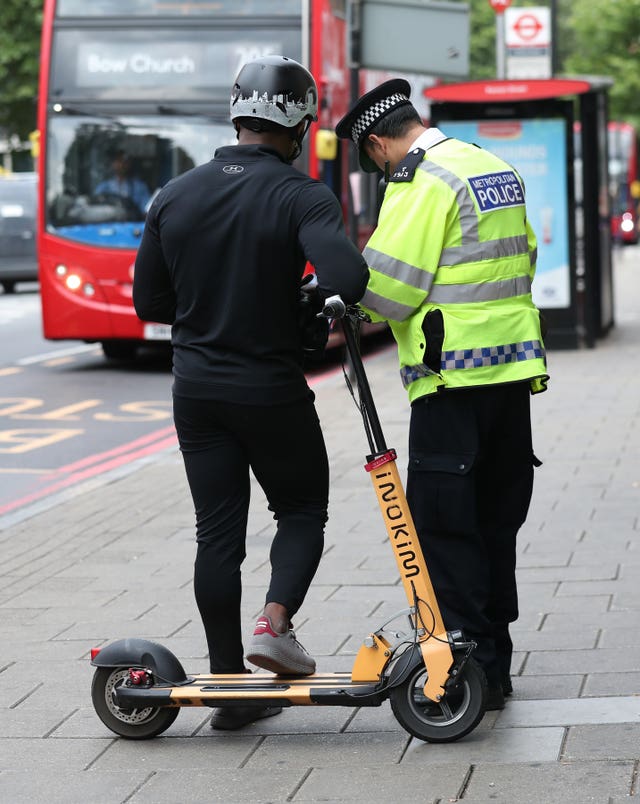
A Government review which could lead to electric scooters being allowed on UK roads should be accelerated, London’s transport authority has said.
Maximum speeds and restrictions on where they can be ridden must be among safeguards introduced if the Department for Transport (DfT) ends its ban on the vehicles, according to Transport for London (TfL).
E-scooters can only legally be used on private land in the UK but many people are breaking the law by riding them on roads and pavements.
In March, the DfT launched a review of legislation to accommodate changes in the way people and goods move, which could lead to e-scooters being legalised for road use for the first time.
TfL’s director of transport innovation Michael Hurwitz wants to ensure that if such a change in the law occurs, “it is done in a safe way”.
He told the PA news agency: “We need the Department for Transport to accelerate their review to really put some safeguards around their use.”
Mr Hurwitz wants speed limits to be introduced, citing rules in Germany which only allow them to be ridden at up to 12mph.
He believes they should only be allowed on roads and called for rules on where they can be parked.

YouTube star and TV presenter Emily Hartridge, 35, became the first person in the UK to be killed while riding an e-scooter when she was struck by a lorry in Battersea, south London, on July 12.
The following day a 14-year-old boy suffered a serious head injury after crashing into a bus stop in Beckenham, south-east London.
E-scooters are currently banned from pavements under the Highway Act 1835 and it is an offence to use them on roads as they do not comply with motorised vehicle requirements such as insurance, tax and driver testing.
Mr Hurwitz said it is “a bit of an understatement to say the law is out of date”, adding that the growth in the popularity of e-scooters has been “coming for years”.
The Metropolitan Police caught nearly 100 riders in London last week.
Most offenders were given a warning but 10 were fined and had their scooters seized due to aggravating factors such as travelling too fast or ignoring a red traffic light.

Enjoy the convenience of having The Sunday Post delivered as a digital ePaper straight to your smartphone, tablet or computer.
Subscribe for only £5.49 a month and enjoy all the benefits of the printed paper as a digital replica.
Subscribe